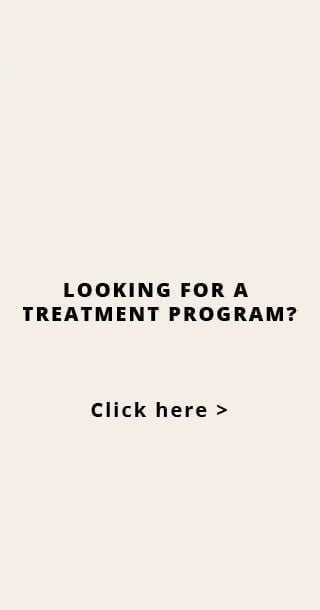Estimated reading time: 9 minute(s)
Prednisone is a synthetic corticosteroid drug commonly used in medical practice for its anti-inflammatory and immunosuppressive properties. It belongs to a class of medications known as glucocorticoids, which mimic the effects of cortisol, a hormone naturally produced by the adrenal glands.
Prednisone has a broad range of therapeutic uses due to its potent anti-inflammatory actions. It is commonly prescribed to treat asthma, rheumatoid arthritis, lupus, and inflammatory bowel disease. The medication can also be used to manage allergic reactions and certain skin conditions and prevent organ rejection after transplantation.
Read Also About Lexapro Withdrawal
However, while the medicine can be highly effective, it also carries some potential risks and precautions that need to be considered. Prolonged or high-dose use of Prednisone can cause various side effects. This does not mean you should stop taking the medicine. Abruptly stopping the medication after prolonged use can also cause issues.
Many individuals may experience withdrawal effects, making it challenging to get off Prednisone. To avoid the side effects of Prednisone, you should always use the medicine under the supervision of a licensed healthcare provider and follow all instructions.
Prednisone – Mechanism Of Action
Prednisone mimics the actions of cortisol, a natural hormone the adrenal glands produce. It belongs to a class of medications called corticosteroids or glucocorticoids. Prednisone is similar to cortisol and binds to the glucocorticoid receptors in various cells throughout the body.
One of the primary mechanisms of action of Prednisone is its anti-inflammatory effect. When inflammation occurs in the body, such as in conditions like arthritis or asthma, immune cells release cytokines that promote inflammation. Prednisone inhibits the production of these cytokines, particularly interleukins and tumor necrosis factors, which are crucial mediators of the inflammatory response. Prednisone helps suppress inflammation and alleviate associated symptoms by reducing these inflammatory substances’ production.
Read Also About Dangers Of Mixing Prednisone And Alcohol
Prednisone also exerts immunosuppressive effects. It dampens the activity of the immune system, preventing it from attacking the body’s tissues in autoimmune disorders such as rheumatoid arthritis and lupus. Prednisone inhibits the activation and migration of immune cells, such as lymphocytes, reducing their ability to cause damage to the affected tissues.
Another way Prednisone works is by altering the expression of genes involved in inflammation and immune response. It acts on specific genes responsible for producing proteins that regulate these processes. By modulating gene expression, Prednisone can control the immune and inflammatory responses in the body.
The dosage and duration of prednisone treatment vary depending on the condition being treated and the individual’s response. It is essential to follow the prescribed regimen and not abruptly stop taking the medicine, as it may cause prednisone withdrawal and various side effects.
How Does Prednisone Cause Withdrawal – Risk Of Dependence
Prednisone can lead to physical dependence when taken for an extended period or in high doses. It means abruptly stopping or rapidly reducing the prednisone dosage can cause withdrawal symptoms. Prednisone withdrawal occurs because the body’s adrenal glands, which produce cortisol, have been suppressed due to the presence of the synthetic corticosteroid.
When a person takes Prednisone for a long time, the body adapts to the presence of the medication. It relies on it to maintain normal cortisol levels. The adrenal glands, which usually produce cortisol, become dormant or produce less cortisol. The adaptation occurs because Prednisone provides the body with an external source of cortisol. Hence, the adrenal glands reduce their natural production.
If Prednisone is suddenly discontinued or the dosage is rapidly reduced, the body is left with insufficient cortisol levels, leading to withdrawal symptoms. The severity and duration of these symptoms can vary depending on factors such as the duration of prednisone use, dosage, and individual response. Some of the prednisone withdrawal symptoms are the following:
- Fatigue and weakness: A common symptom is extreme tiredness and a lack of energy due to reduced cortisol levels.
- Muscle and joint pain: Individuals may experience muscle aches and joint discomfort, often flu-like symptoms.
- Nausea and vomiting: Gastrointestinal symptoms like nausea and vomiting can occur during prednisone withdrawal.
- Dizziness and lightheadedness: Low cortisol levels can cause a drop in blood pressure, leading to dizziness and lightheadedness.
- Low mood and irritability: Mood changes, including anxiety, depression, and irritability, are possible during prednisone withdrawal.
- Headaches: Some individuals may experience headaches due to the body adjusting to the absence of Prednisone.
- Insomnia: Difficulties with sleep, including insomnia and disrupted sleep patterns, can occur during withdrawal.
Not everyone experiences the same intensity or combination of withdrawal symptoms; some individuals may have a milder experience. In contrast, others may face more severe symptoms.
To minimize the risk of prednisone withdrawal, it is crucial to gradually taper off the medication under the supervision of a healthcare professional. The gradual tapering allows the adrenal glands to slowly resume their normal cortisol production. It helps prevent or reduce the severity of withdrawal symptoms.
Managing Withdrawal – Talking To A Healthcare Provider
Prednisone withdrawal can be a challenging and uncomfortable experience. While some people experience mild symptoms that resolve on their own, others require medical intervention and support. Here are some situations in which it is advisable to seek help for prednisone withdrawal:
- Severe or worsening symptoms: If you are experiencing severe withdrawal symptoms or if your symptoms are getting worse over time, seek medical help immediately. Severe symptoms may include extreme fatigue, debilitating muscle or joint pain, persistent nausea or vomiting, or significant mood changes.
- Difficulty managing symptoms: If you find it difficult to cope with the withdrawal symptoms or if they interfere with your daily activities, it is recommended to consult a healthcare professional. They can provide guidance and support in managing the symptoms effectively.
- Pre-existing medical conditions: If you have underlying conditions such as adrenal insufficiency, diabetes, or any other chronic illness, talk to your doctor as soon as possible. These conditions may require specific monitoring and adjustment of other medications during withdrawal.
- Prolonged duration of symptoms: While Prednisone withdrawal symptoms can vary in duration, if you are experiencing prolonged or persistent symptoms beyond what is considered typical, seek medical attention. A healthcare professional can assess your situation and determine whether additional interventions or treatments are necessary.
- Safety concerns: If you have concerns about your overall health and safety during the withdrawal process, it is essential to contact a healthcare professional. They can evaluate your circumstances and provide appropriate guidance to ensure your well-being.
- Support and guidance: Even if your withdrawal symptoms are relatively mild, it can still be beneficial to seek help. Healthcare professionals can monitor your progress and guide you through the tapering process to minimize discomfort and optimize your overall outcome.
If you are unsure whether you need help for prednisone withdrawal, it is always best to consult a healthcare professional. They can assess your situation, provide personalized advice, and ensure a safe and successful withdrawal from Prednisone.
How To Treat Prednisone Withdrawal – Phases Of Treatment
When it comes to prednisone withdrawal treatment, it typically involves a phased approach that focuses on gradually reducing the dosage of Prednisone over time. The goal is to allow the body’s adrenal glands to resume their normal production of cortisol while minimizing the risk of withdrawal symptoms. Here are the phases commonly followed during prednisone withdrawal treatment:
Evaluation and planning
The first phase involves a comprehensive evaluation by a healthcare professional. They will assess your medical history, current condition, and the reasons for prednisone use. The assessment helps determine the appropriate tapering schedule and any necessary precautions or interventions based on your needs.
Tapering
The tapering phase involves gradually reducing the prednisone dosage over a specified period. The healthcare professional determines the tapering schedule based on various factors, including the duration and dosage of prednisone use, the underlying condition being treated, and individual response. Tapering is typically done by decreasing the dosage by a certain percentage or amount at regular intervals, such as weekly or biweekly.
Monitoring and adjustment
Throughout the tapering phase, close monitoring is essential. Regular follow-up appointments with the healthcare professional allow for evaluation of your progress and adjustment of the tapering schedule if needed. Monitoring may involve assessing symptoms, checking blood tests (such as cortisol levels), and evaluating potential complications or concerns.
Supportive care
During the tapering process, supportive care plays a crucial role in managing withdrawal symptoms and promoting overall well-being. This may include lifestyle modifications, such as adequate rest, stress management techniques, and a healthy diet. The healthcare professional may also recommend additional medications or interventions to address specific symptoms or complications that may arise during withdrawal.
Follow-up care
Once the prednisone tapering is completed, follow-up care is vital to ensure a smooth transition and assess the overall outcome. The healthcare professional may schedule regular check-ups to monitor any lingering symptoms, evaluate the return of adrenal function, and address ongoing needs or concerns.
The duration and specifics of each phase can vary depending on individual circumstances and the healthcare professional’s recommendations. The tapering schedule and treatment plan are typically tailored to the individual, considering factors such as the underlying condition being treated, the dosage and duration of prednisone use, and the person’s overall health.
What Happens If You Do Not Get Help For Prednisone Withdrawal Symptoms?
If you do not receive proper treatment for prednisone withdrawal, you may experience uncomfortable and potentially severe symptoms, such as:
- Increased risk of complications: Not getting help can exacerbate underlying conditions or lead to new difficulties. For example, individuals with autoimmune disorders may experience disease flares during withdrawal, requiring medical intervention. Additionally, prolonged adrenal suppression can result in metabolic imbalances, electrolyte abnormalities, and other health issues that may require medical management.
- Psychological impact: Prednisone withdrawal can also have psychological effects, including mood changes, anxiety, and depression. These symptoms can worsen if left untreated, potentially impacting mental well-being and overall functioning.
- Risk of relapse: Without appropriate treatment and support, there may be an increased risk of relapse into the condition for which Prednisone was initially prescribed. It is especially true for individuals with chronic inflammatory or autoimmune diseases who may require alternative treatment strategies to manage their condition effectively.
These symptoms can affect relationships, work or school performance, daily functioning of the body, and significantly lower the quality of life. Therefore, it is better to get professional help on time.
FAQs
Can you die from Prednisone withdrawal?
While prednisone withdrawal can be uncomfortable and challenging, it is not typically life-threatening. However, abrupt cessation of high-dose or long-term prednisone use can cause adrenal insufficiency, which requires immediate medical attention. Adrenal insufficiency can be a serious condition if left untreated, but it can be effectively addressed with proper medical management.
How to flush Prednisone out of your system?
Prednisone is metabolized and eliminated from the body naturally over time. There is no specific way to “flush” Prednisone from your system. Follow your healthcare professional’s instructions for tapering off the medication gradually to allow your body to adjust and resume its natural cortisol production.
Can you experience Prednisone withdrawal after 7 days?
Prednisone withdrawal symptoms are more commonly associated with prolonged use or high doses of the medication. If you have taken Prednisone for only a short period, the likelihood of experiencing significant withdrawal symptoms is generally low. For example, stopping Prednisone after 2 days is unlikely to cause withdrawal. However, it is always best to consult your healthcare professional for personalized advice based on your situation.
Is methylprednisolone withdrawal more severe than Prednisone withdrawal?
Methylprednisolone is another corticosteroid similar to Prednisone. While both medications have similar mechanisms of action, individual responses to withdrawal may vary. In general, the severity of withdrawal symptoms may depend on other factors, such as the dosage, duration of use, and individual sensitivity.


